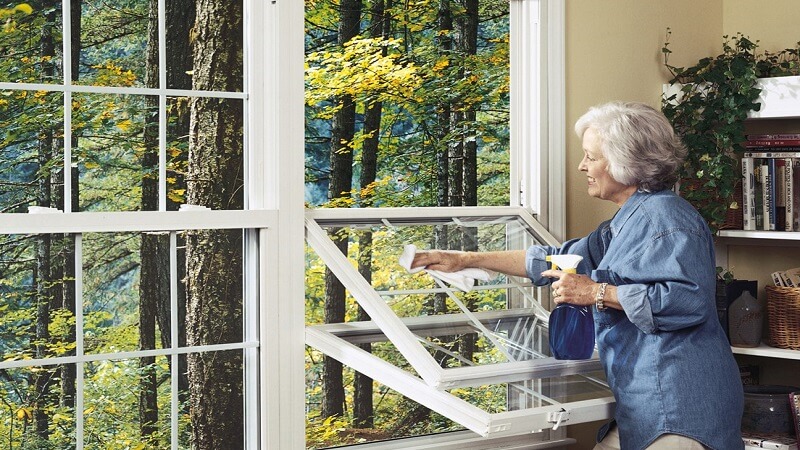Homeowners often overlook the silent signals their windows and doors send over time. They may not creak or groan, but the subtle indicators are there—drafts, rising energy bills, stubborn locks, and fading curb appeal. Knowing when to upgrade isn’t just about appearances; it’s about safety, comfort, and long-term value. This post explores the clearest signs it may be time to invest in new windows and doors—and why catching them early can save you far more than just money.
Visible Deterioration Around Frames and Sashes
One of the first tell-tale signs is visual: warping, peeling, cracking, or rotting frames. Wood can absorb moisture, causing it to expand and deteriorate. Vinyl and fibreglass options are more resistant, but even they can age under harsh weather conditions. If your window or door frames look like they’ve been through a battle with the elements, it’s likely time to consider upgrading.
Rot not only affects aesthetics but also the structural integrity of the opening. Left unchecked, it can spread into surrounding drywall or trim, multiplying repair costs. Regular inspection, especially after winters with heavy moisture, can help you spot decay before it turns into a larger issue.
Drafts and Inconsistent Indoor Temperatures
If you feel a chill near your windows in the winter—or an unusual warmth in the summer—it may not be your HVAC system’s fault. Older windows and doors lose their insulating power over time. Sealants dry out, frames shift, and glass loses its efficiency.
This issue is more than a minor annoyance. Drafts force your furnace or air conditioning to work overtime, pushing energy bills higher month after month. In fact, the Government of Canada suggests that windows alone can account for up to 25% of total house heat loss. New installations featuring Low-E glass and insulated frames are specifically engineered to combat this kind of energy inefficiency.
Difficulty Opening, Closing, or Locking
Smooth operation is key to both safety and usability. If your windows are suddenly difficult to open or your doors require extra force to latch properly, the hardware or frame may be warped. Seasonal expansion and contraction—especially in climates with drastic temperature shifts—can take a toll on older units.
For windows, poor operation can be dangerous in emergencies where a quick exit is needed. And with doors, a poor seal or misalignment can affect both your home’s security and insulation. A properly fitted replacement ensures your home remains secure, accessible, and protected from the elements.
Unwanted Noise from Outside
If your home used to be a peaceful retreat but now seems to echo every passing car, barking dog, or street conversation, sound insulation might be failing. Older single-pane or poorly installed windows and doors offer minimal protection against noise pollution.
Upgrading to double- or triple-pane glass with argon gas fills can significantly dampen external sounds. This makes a notable difference if you live near busy streets, schools, or commercial areas. Soundproofing is not only a luxury—it can be a key contributor to mental well-being and restful sleep.
Condensation Between Glass Panes
Seeing fog or moisture build-up between the layers of glass means the seal on your double- or triple-pane window has failed. This allows air and moisture to seep in, defeating the thermal barrier that multi-pane units are designed to provide.
While some surface condensation may occur due to indoor humidity levels, moisture between panes is irreversible and signifies that your window is no longer functioning as intended. These units should be replaced to restore clarity and energy performance.
Rising Energy Bills Without Other Changes
If your energy usage habits haven’t changed but your monthly bills have climbed, your aging windows or doors might be the hidden culprit. As insulation weakens, your HVAC system has to run longer and harder to maintain comfortable temperatures.
Modern energy-efficient products are often Energy Star-rated and designed for your local climate, offering superior thermal performance. Upgrading may seem costly upfront, but the long-term savings on utilities can be substantial.
Outdated Appearance Affecting Curb Appeal
Curb appeal matters more than many homeowners realize—especially if you’re thinking of selling. Worn-out windows and doors can make even a well-maintained home look dated. Modern replacements are available in sleek styles, contemporary colours, and energy-efficient materials that boost both form and function.
According to data from Remodeling Magazine, homeowners typically recover over 70% of their investment on new windows and entry doors when reselling. Aesthetic upgrades also send a strong message about home care and upkeep to potential buyers.
You’re Making Other Home Upgrades
If you’re already remodelling, repainting, or landscaping, now is the perfect time to replace windows and doors as well. Leaving outdated features in place while refreshing the rest of your home can create a visual disconnect.
Plus, coordinating these upgrades allows for more efficient project management, especially if you’re working with contractors. It also ensures continuity in design and performance across your home’s exterior.
Planning for the Long Term
Sometimes the best time to upgrade is before things start falling apart. Proactive homeowners know that waiting for failure—be it a cracked pane, a jammed lock, or a sky-high energy bill—isn’t the smartest approach.
Investing in replacement windows and replacement doors can improve comfort, reduce maintenance, and enhance property value—all without the stress of emergency repairs. If your current fixtures are 15–20 years old, chances are they’re nearing the end of their lifecycle.
A Step Toward Better Living
Your windows and doors are more than architectural features—they’re the gateways to your home’s comfort, efficiency, and peace of mind. Replacing them might seem like a big decision, but the payoff in day-to-day quality of life is often immediate and lasting. If you’ve noticed any of the signs above, it may be time to make the switch and step into a quieter, cozier, and more energy-smart future.

